The Titanic
On April 15th, 1912, the “unsinkable” British luxury cruise liner RMS Titanic hit an iceberg and sank 450 miles off Newfoundland. Over 1,500 souls were lost, and the infamous ship has captured imaginations ever since.

In June 2023, Titan, a submersible operated by OceanGate, went missing during an expedition to view the wreck site 12,500 feet under the Atlantic. A massive rescue mission was launched, and the world held its collective breath, but sadly it was too late. Tragically, the submersible had imploded, taking the lives of all five occupants.
RMS Carpathia
One of the first ships to arrive at the sinking Titanic was the British passenger liner RMS Carpathia. Her crew rescued 706 survivors from lifeboats. However, The Carpathia went to a similarly watery grave when a German U-boat slammed three torpedoes into her side during World War I.

Luckily, only five people lost their lives. In 1999, Argosy International Ltd found The Carpathia. She lay in 600 feet of water, 200 miles west of Land’s End, sitting upright on the ocean bed.
MV Doña Paz
On December 20th, 1987, Philippine passenger ferry MV Doña Paz was en route to Manila when it caught fire and sank after colliding with fellow Philippine oil tanker MT Vector. The collision is the deadliest peacetime maritime disaster in history, claiming 4,386 lives. Only 26 survived.
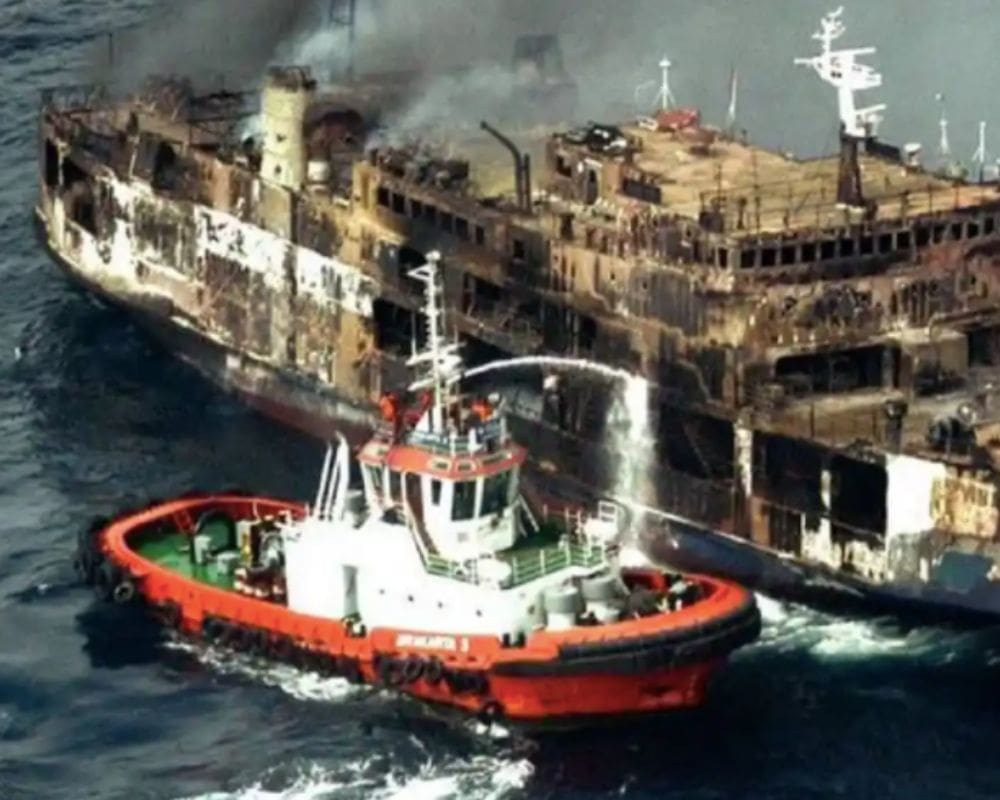
The overcrowded ferry had no radio and no lifejackets for passengers. The wreck was located in the shark-infested Tablas Strait in April 2019 by the RV Petrel. She is known as ‘Asia’s Titanic’.
The Wilhelm Gustloff
On January 30th, 1945, a Soviet submarine torpedoed the German military transport ship, the Wilhelm Gustloff. Over 9,400 people perished when she sank into the frigid waters of the Baltic Sea. Only 1,252 were saved, making it the deadliest maritime disaster in history.

Today, the Wilhelm Gustloff lies 12 nautical miles off Stolpe Bank near Poland. Treasure hunters searched for the ship’s legendary Lost Amber Room for years. But now the Polish Maritime Office has forbidden diving within 1,600 feet of the wreckage.
El Cazador
While delivering a colossal shipment of silver coins to New Orleans in 1784, the Spanish brig El Cazador was caught in a storm in the Gulf of Mexico. She was lost off the Louisiana coast, where she lay undiscovered for over 200 years.
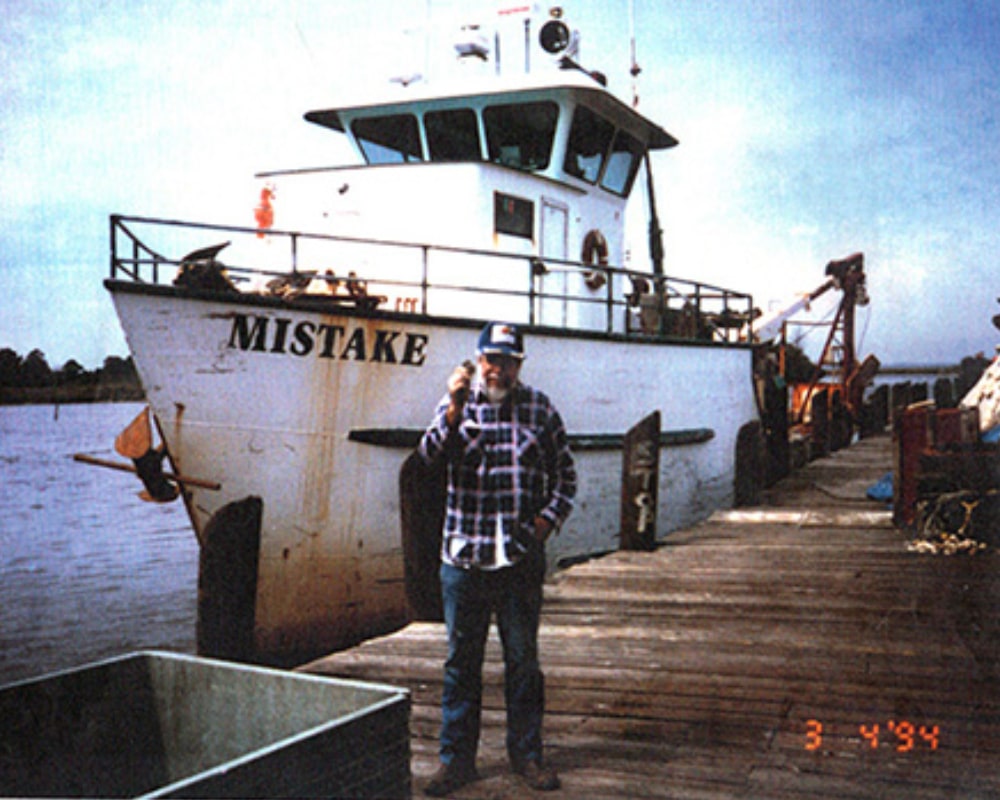
In 1993, shrimp boat captain Jerry Murphy was fishing in his butterfish trawler, the Mistake, when his net snagged something on the bottom. He had found the wreck of El Cazador by mistake! The subsequent salvage effort recovered four hundred thousand Spanish reales or pieces of eight.
The Eagle
The Eagle is called the Mount Everest of the Florida Keys. Back in 1985, when she was called the Raila Dan, this former Royal Canadian Navy patrol was waiting to be scuttled after a fire.
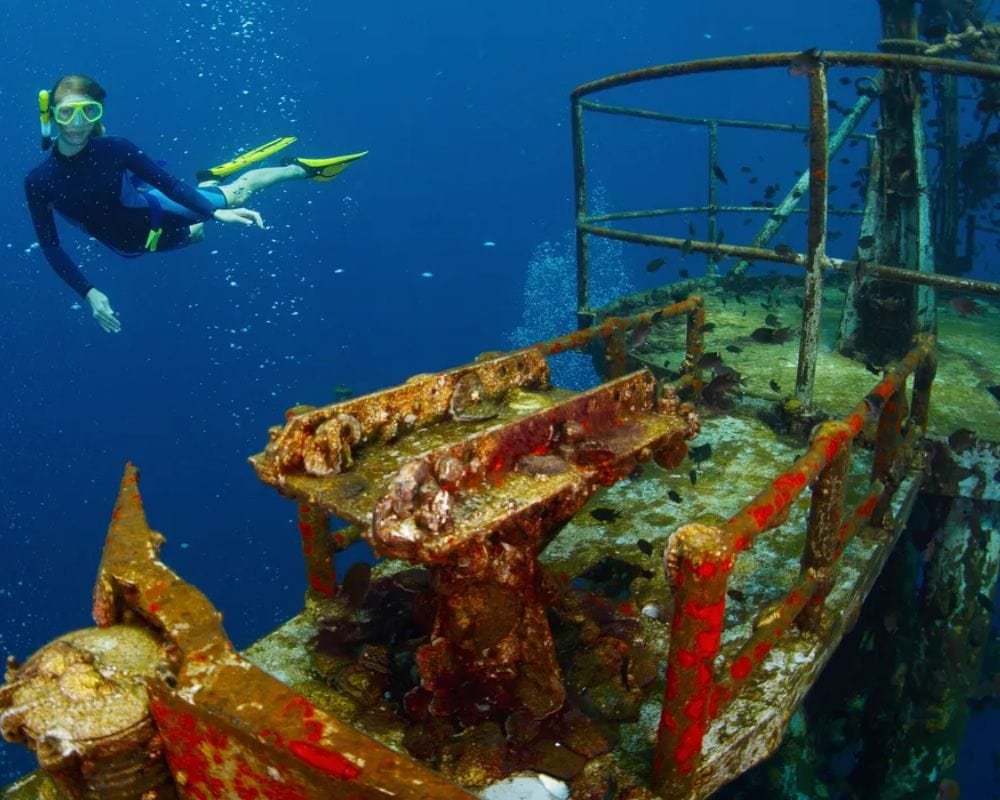
She was meant to become an artificial reef but broke from her moorings and sank three miles northeast of Alligator Reef Light. She was discovered in 2001, five miles off Islamorada, Florida. Now, if the name Alligator Reef Light doesn’t put you off, maybe the hammerhead sharks that frequent the water will!
USS Indianapolis
The USS Indianapolis might be the second most famous ship after The Titanic. On July 30th, 1945, after delivering the uranium for the Hiroshima atomic bomb, she was struck by torpedoes from a Japanese submarine and sank into the Pacific Ocean in 12 minutes.

As Quint famously explains in Jaws, “So, 1,110 men went into the water, 316 men came out; the sharks took the rest.” In 2017, a search team financed by Microsoft co-founder Paul Allen found the wreckage lying at 18,000 feet in the shark-infested Philippine Sea.
RMS Lusitania
When launched in 1906, the British ocean liner RMS Lusitania was the largest passenger ship in the world until the Mauretania was launched three months later.
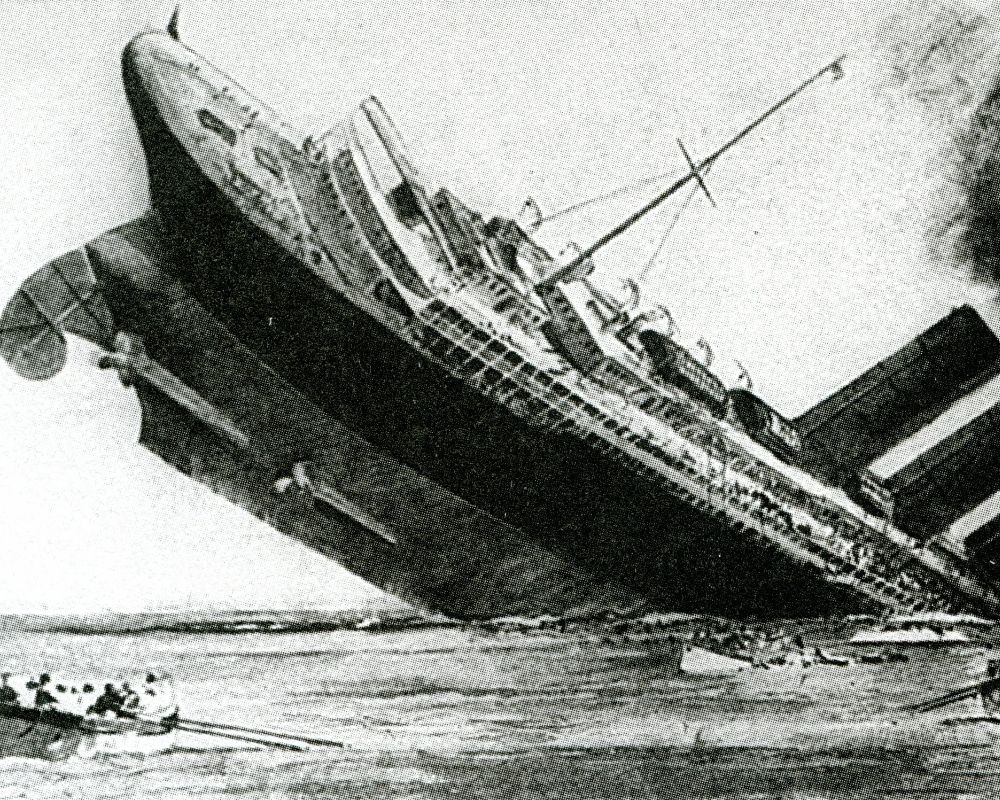
After more than 200 transatlantic crossings, in May 1915, she was attacked by a German U-boat off the southern coast of Ireland, taking the lives of 1,198 passengers and crew. The sinking of the Lusitania was a contributing factor in the United States joining World War I. Nowadays, she lies 11 miles south of the lighthouse at Kinsale, Ireland, under 300 feet of water.
USS Arizona
On December 7th, 1941, Japanese forces attacked Pearl Harbour, Hawaii. Japanese airplanes hit the deck of the USS Arizona with several bombs, and she sank, taking the lives of 1,177 crew. The attack on Pearl Harbor was the act that brought the United States into World War II.
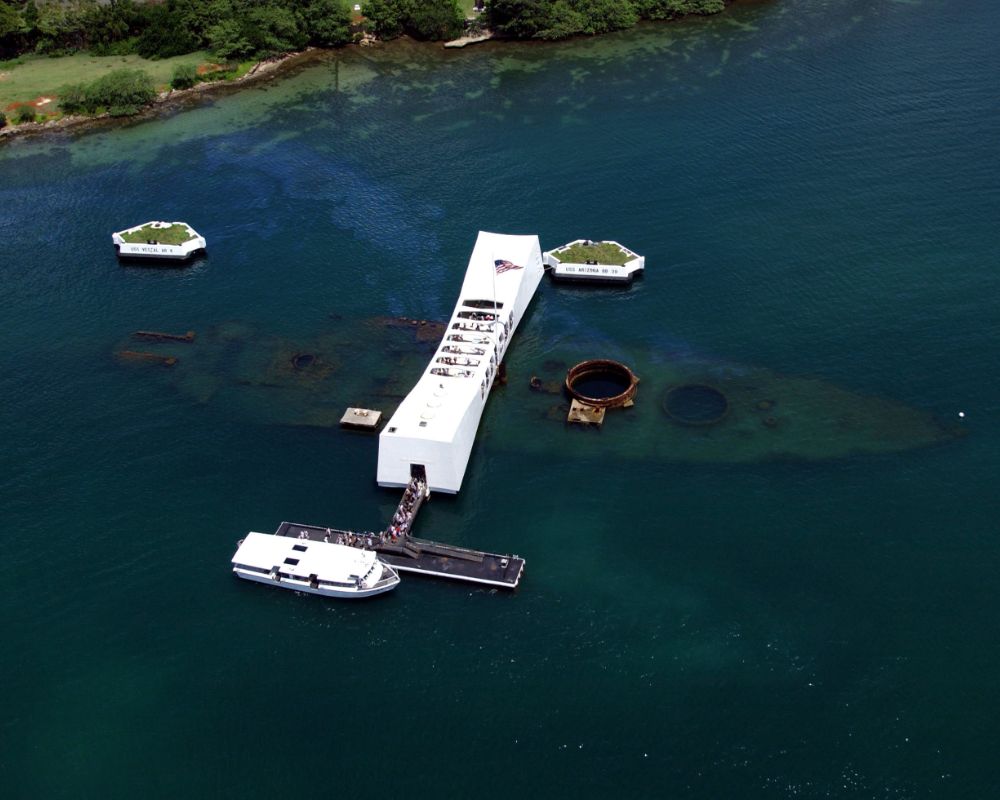
While other ships were repaired, the USS Arizona now rests at the bottom of Pearl Harbour. You can visit the memorial to honor those who died during the attack.
SS Andrea Doria
The Andrea Doria was a luxury transatlantic ocean liner that sank after colliding with MS Stockholm in 1956. Luckily, 1,660 of her 1,706 passengers and crew were saved before she slipped into the Atlantic off Nantucket Island, Massachusetts.

Hands up who knows the limerick about the man from Nantucket? Because of the depth, temperature, and strong currents, the Andrea Doria is one of the most dangerous dive sites in the world, claiming the lives of 16 divers. Hence, it is known as The Mount Everest of Dive Sites.
The Endurance
In 1915, Sir Ernest Shackleton and his crew of 27 attempted to reach the South Pole. They never made it because their ship, The Endurance, was crushed by pack ice. They escaped to Elephant Island and survived on seal and penguin meat for five months. Shackleton and five men embarked on an 800-mile journey to South Georgia, eventually saving his entire crew.

In 2022, 100 years to the day after Shackleton’s funeral, his legendary ship was finally discovered 10,000 feet beneath the icy Weddell Sea.
USS Johnston
This ship was discovered by the late Microsoft co-founder Paul Allen’s ship, the Petrel, in 2019. However, Victor Vescovo successfully surveyed and photographed the wreck and identified it as the USS Johnston two years later. She lies 21,180 feet down in the Emden Deep in the Philippine Trench.

The Johnston also went down after being struck by enemy fire during the Battle off Samar. Of the 327 crew members, 187 perished. From 2019 to 2022, this was the deepest known shipwreck in the world.
SS Rio Grande
Until the USS Johnson was discovered in 2019, the SS Rio Grande was the deepest-known shipwreck at 18,904 feet. The German blockade runner was sunk 55 miles off the northeast coast of Brazil by two US destroyers in January 1944 with 72 survivors.
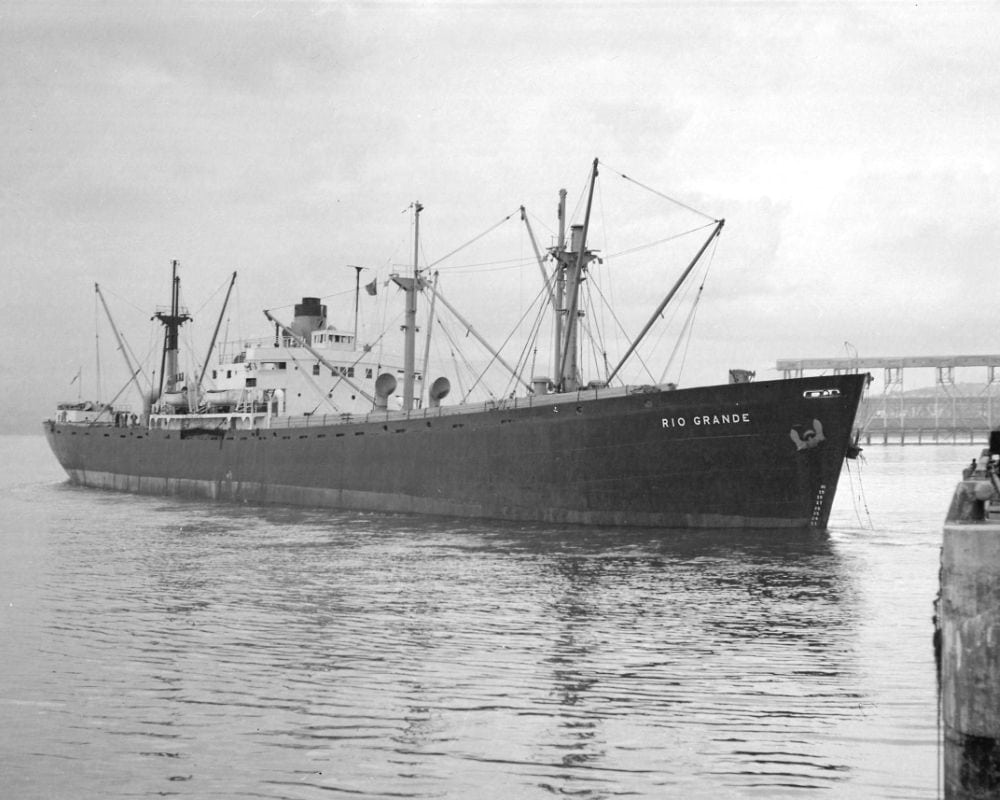
She was carrying 500 tons of tin, 2,370 tons of copper, and 311 tons of cobalt. That’s over a million dollars worth of cobalt alone. So, who wants to go treasure hunting in the shark-infested Atlantic?
Eduard Bohlen
The Eduard Bohlen is a bizarre shipwreck because she doesn’t lie underwater. In fact, she not only sits on terra firma, but she’s also almost half a mile inland! In 1909, the ship got stuck in a dense ocean fog off the coast and was wrecked at Conception Bay.

Nowadays, she sits on the sand in Namibia’s Skeleton Coast. The spooky-sounding shoreline is a graveyard to more than a thousand rusty, wrecked vessels, and you need a guide, a permit, and a rickety prop-plane ride to get there.
SS Thistlegorm
The SS Thistlegorm was an armed British Merchant Navy ship that collected steel rails and aircraft parts from America, grain from Argentina, and rum from the West Indies. On her fourth mission, she carried armored vehicles, motorcycles, weapons, and radio equipment to Egypt.
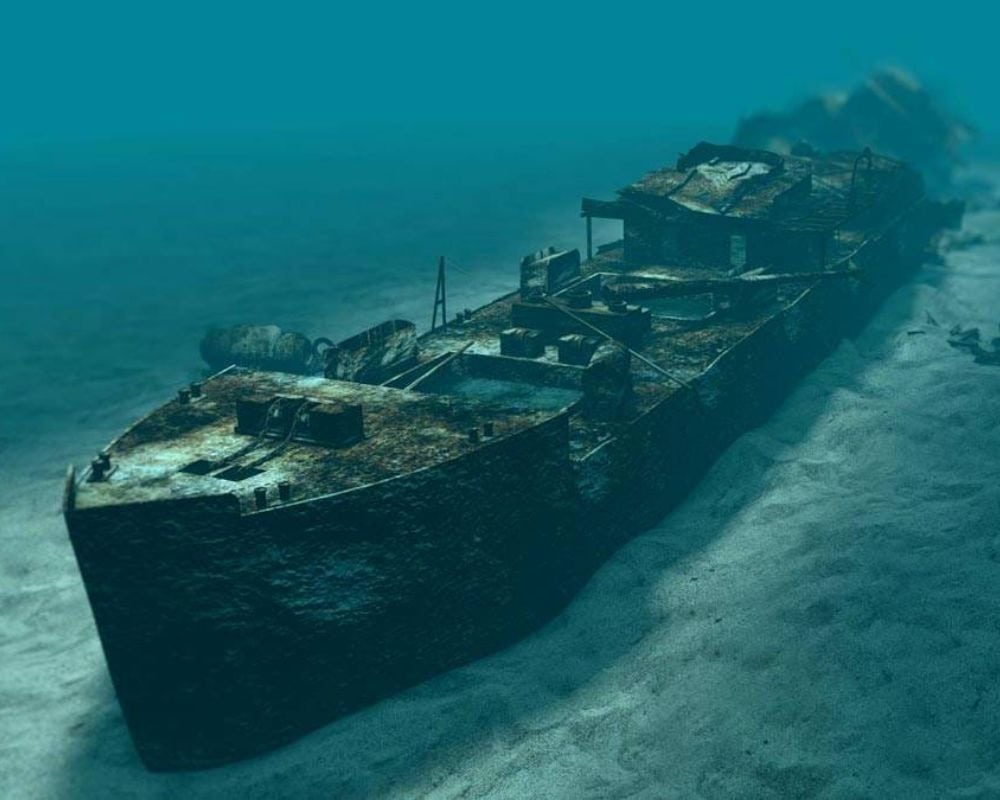
But in September 1941, German bomber aircraft bombed her. The ship caught fire, broke into two pieces, and sank. Today, the wreck lies near Egypt’s Ras Mohammad National Park at a depth of about 100 feet — a scuba divers’ paradise in the treacherous Red Sea.
Giannis D
A Japanese cargo ship was renamed the Giannis D when a Greek company bought her in 1980. Three years later, she departed from Rijeka, Yugoslavia, carrying lumber bound for Saudi Arabia. The captain took a nap, leaving a junior at the helm, and was “rudely awakened” by the sound of his ship running aground on the Sha’ab Abu Nuhas Reef.
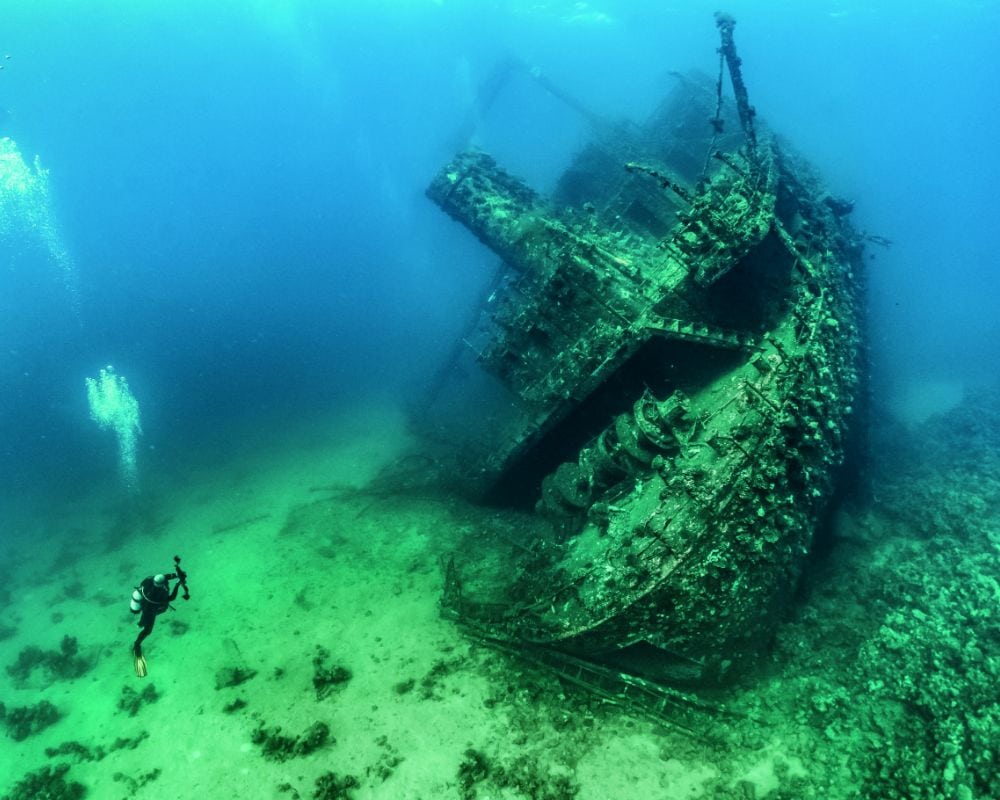
Today, the ship lies in three sections about ten meters below the Red Sea. The shallow depth makes her ideal for divers, but make sure you don’t have a rude awakening on those rocks!
Sweepstakes
Big Tub Harbour is Canada’s Bermuda Triangle. Lying near Tobermory in Ontario, the body of water is home to over 20 shipwrecks which tells you how perilous the deceptively clear blue waters are. But the star of the show is the Sweepstakes, a Great Lakes Schooner.
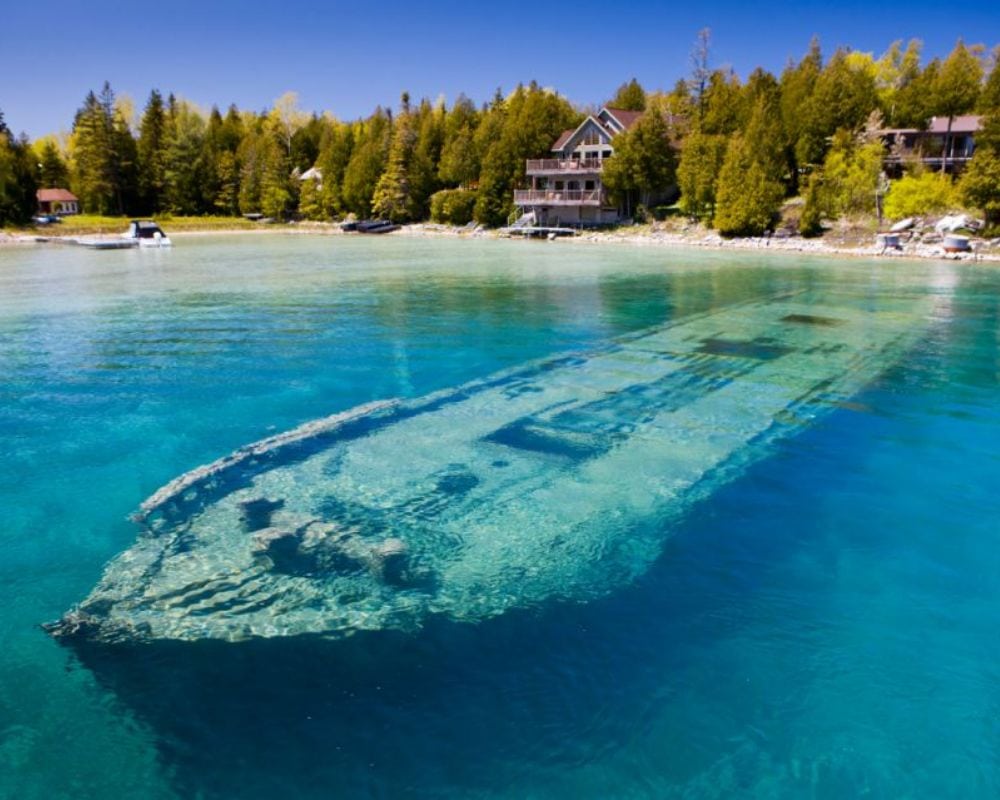
In 1895, while hauling coal, she sustained hull damage. Repairs were too expensive, so she was asset stripped and scuttled. Okay, diving the Sweepstakes wreckage or taking a glass-bottomed boat tour isn’t too dangerous, but the surroundings are too beautiful not to mention.
The Peshtigo and St. Andrews
One dark and misty night in June 1878, two ships, the Peshtigo and St. Andrews, collided and sank in the icy waters of Lake Michigan. Adventurers searched in the wrong place for years, as it was believed they sank in Lake Huron.

In 2019, maritime history buff Bernie Hellstrom discovered the remains of the two Civil War-era tall ships at a depth of 200 feet. If you don’t think The Great Lakes are dangerous, they contain over 5,000 shipwrecks that have taken the lives of over 30,000 mariners.
USS Saratoga
After being torpedoed and repaired, the Lexington-class US Navy aircraft carrier USS Saratoga took part in the Battle of Iwo Jima in 1945. But a year later, the battlecruiser was volunteered as a target for nuclear weapon tests during Operation Crossroads.

She survived the first airblast with very little damage, but a second nuclear test lifted the 888-foot, 43,0000-ton vessel out of the water before sending her to the bottom of Bikini Atoll. If you don’t mind a bit of radiation and maybe encountering Godzilla, you can dive there today.
USNS General Hoyt S Vandenberg
During World War II, the USNS General Hoyt S Vandenberg operated as a military troop transport and missile-tracking ship. In 1983, the 522-foot-long, 17,120-ton ship was officially retired. But then, in May 2009, she was scuttled to become an artificial coral reef in Key West, Florida.
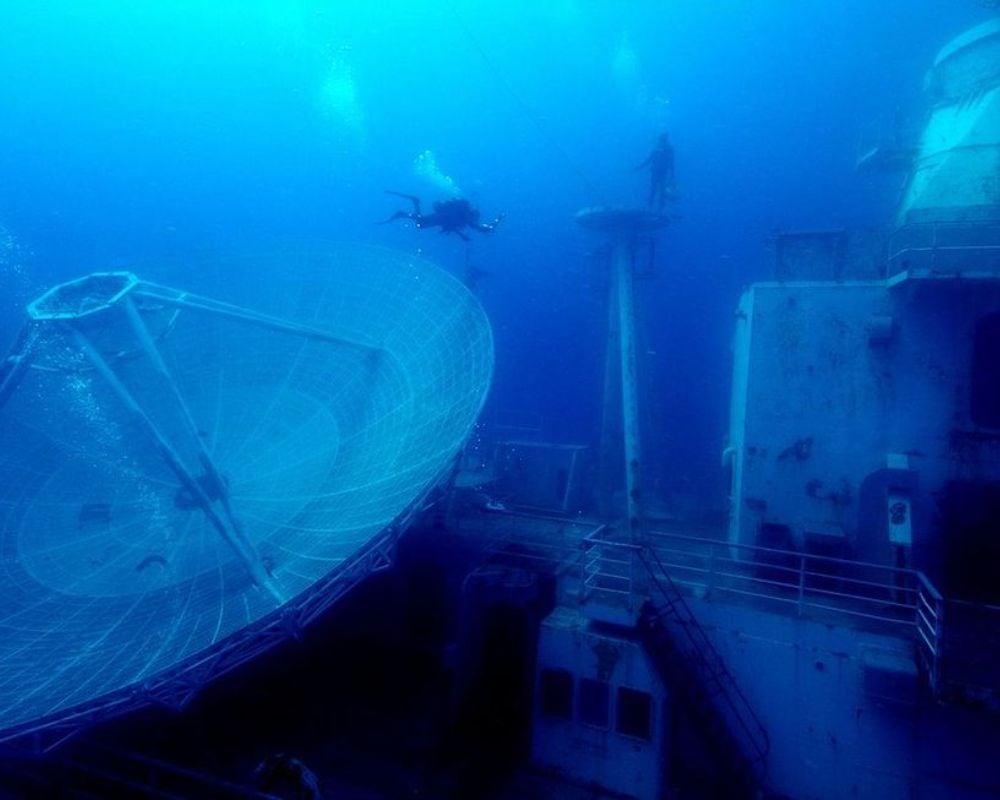
The ship sank to a depth of 140 feet and is surrounded by sharks, jellyfish, and razor-sharp coral. She’s the second-largest artificial reef in the world, after the aircraft carrier USS Oriskany in the Gulf of Mexico.
MS World Discoverer
This German cruise ship had a grand and mighty name until she had a run-in with an uncharted coral reef in the Solomon Islands in 2000. She was grounded to prevent her from sinking, and several companies tried to salvage her. The ship wasn’t dangerous, but the locals were!

When they arrived, they found out she had been ransacked of most of the goods during the Solomon Islands’ Civil War between 1998 and 2003. Nowadays, she sits in Roderick Bay in the Sandfly Passage at an angle of about 45 degrees.
Niagara Scow
You know how in movies, people go over giant waterfalls in boats? Well, that nearly happened to two men in 1918. Gustave F. Lofberg and Frank Harris came perilously close to plunging their small iron scow over the Horseshoe Falls, the largest of the Niagara Falls.
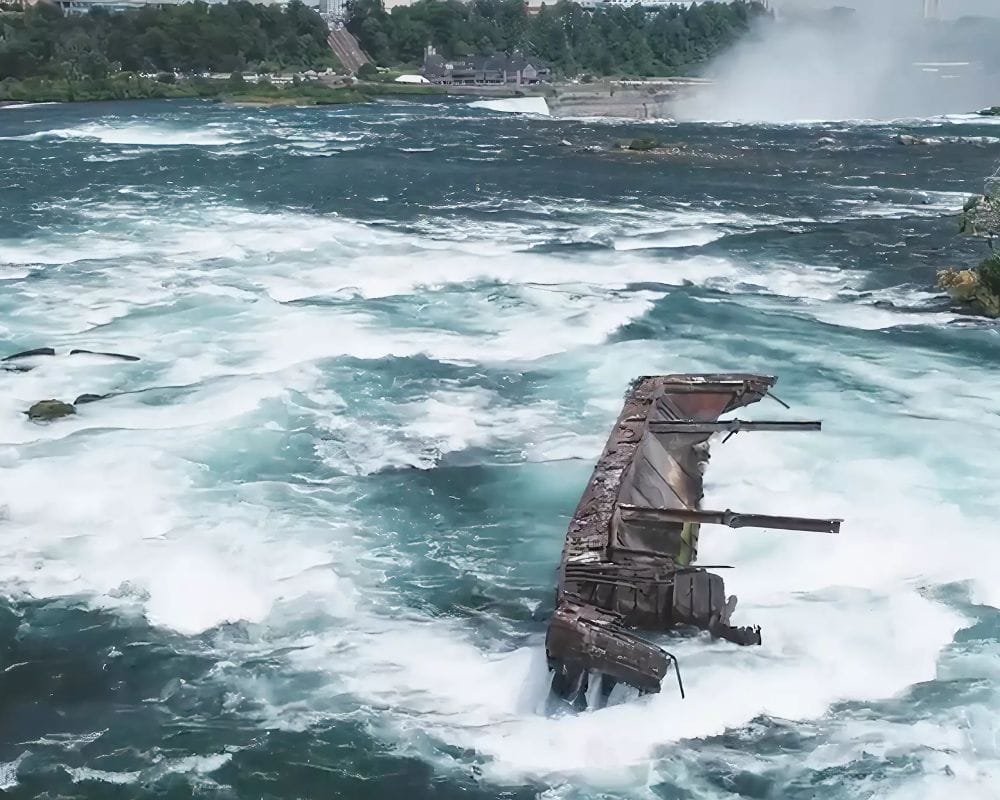
Fortunately, the two men were rescued, but their boat remained stuck above the falls. In 2019, a storm surge moved the “Niagara Scow” 160 feet downstream. In 2022, the scow broke into several pieces and lodged in the rapids. One day, she’ll go over the falls.
Fujikawa Maru
During World War II, the Japanese Navy commandeered the freighter Fujikawa Maru. However, she was struck on two separate occasions by American torpedoes. First by the submarine, Permit, and then from a strike bomber. The Fujikawa Maru sank into the Chuuk Lagoon in Micronesia, then a critical Japanese wartime stronghold and now home to many shipwrecks.
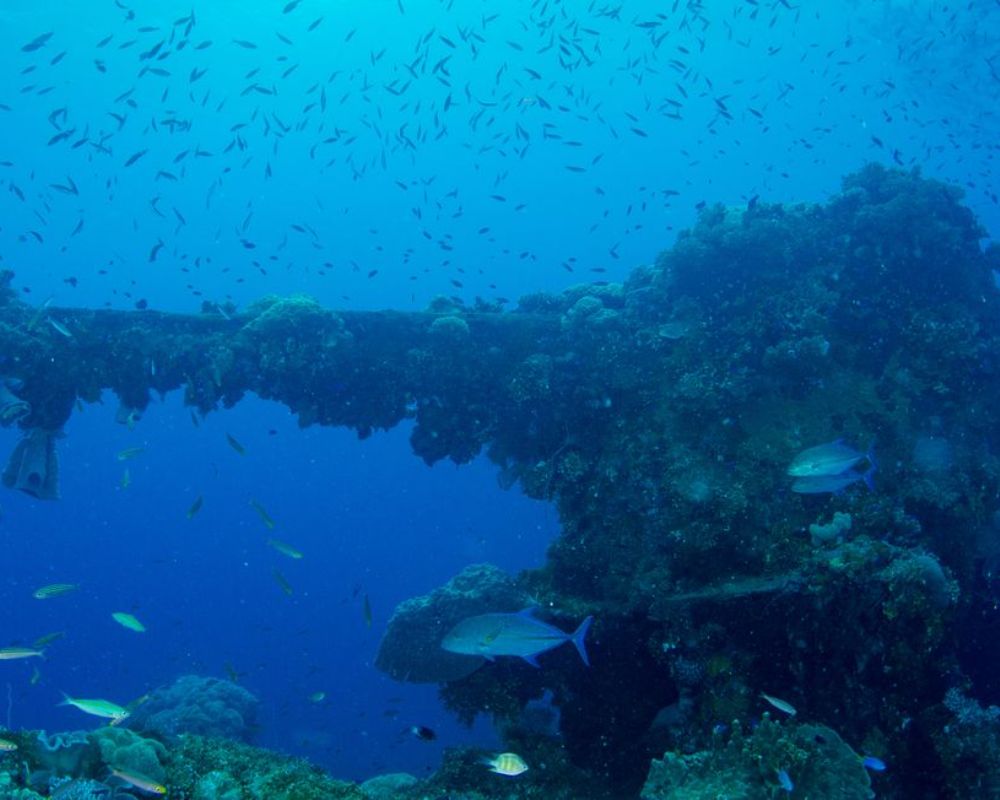
In 1971, oceanologist Jacques Cousteau made a television documentary about the Chuuk Lagoon and its many shipwrecks, and the area soon became a popular but still dangerous diving destination.
Iro Maru
While Jacques Cousteau made the Chuuk Lagoon famous, nearby Palau is a popular diving site as it is home to more than 60 shipwrecks. In 1944, the U.S. Navy sank the Japanese Iro Maru during a preparatory mission called “Operation Desecrate 1” before taking Papua New Guinea. Nowadays, the coral-covered Japanese ship sits upright at 120 feet below the surface.
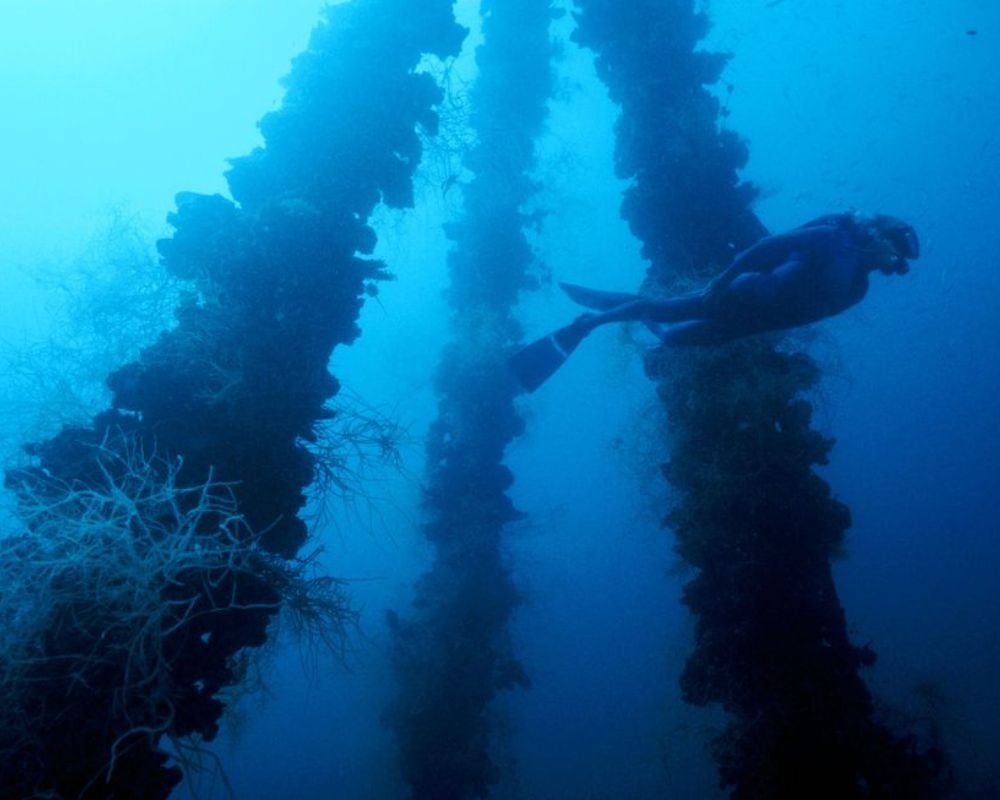
But divers beware! Live ammunition is still strewn about the deck, so exercise extreme caution if you head down to the lower parts.
The German High Seas Fleet
In 1919, the British Royal Navy destroyed the German fleet near Scapa Flow in the Scottish Orkney Islands. As an armistice was extended to end the fighting, skeleton crews were left to run the damaged ships.

However, German Fleet Commander, Rear Admiral Ludwig von Reuter, believed the British would seize the ships or the German government might reject the Treaty of Versailles and start fighting again. So he ordered his fleet to be scuttled. 52 out of 74 ships sank, and you can brave the ice-cold waters to see them.
HMS Vixen
In 1864, HMS Vixen was the heaviest and, therefore, the slowest ironclad gunboat in the British Royal Navy. However, the Vixen and her sister ship, HMS Viper, were deemed too slow and unseaworthy after sea trials. They were both towed to Bermuda in 1888 to become defense ships.
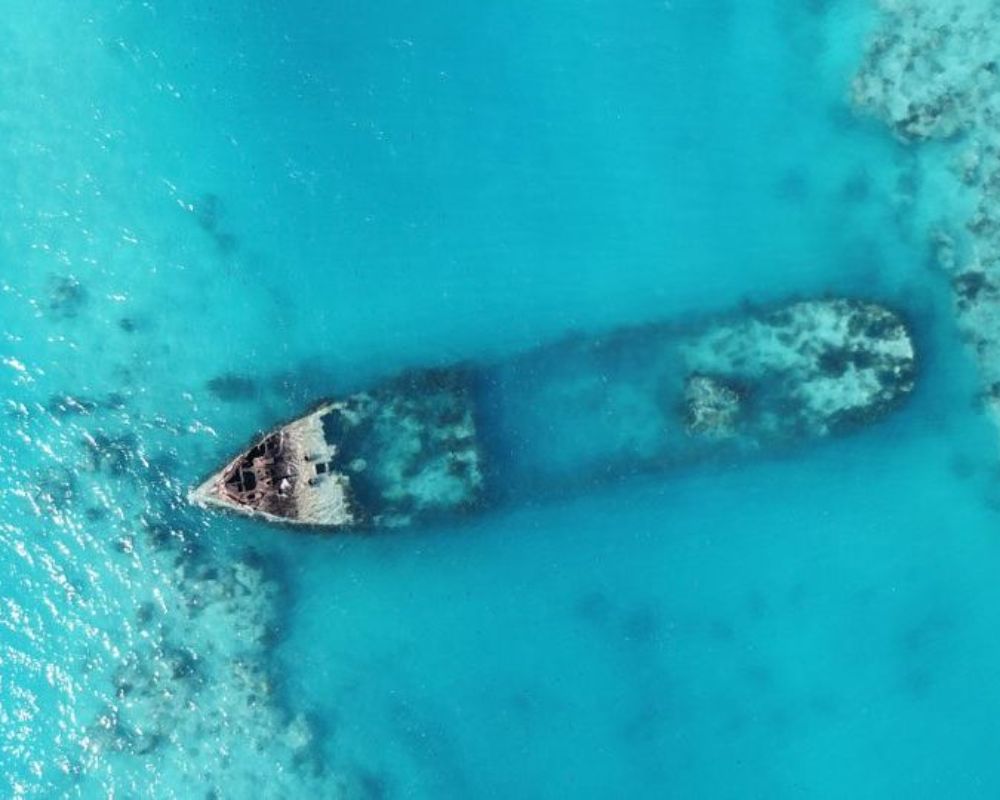
Today, the HMS Vixen’s bow sticks her head out of perfect azure Bermudan waters. You can scuba the protected wreck but need a permit to dive inside. If you’re scared of sharks, you can take a glass-bottomed boat tour.
SS City of Cairo
In November 1942, the British passenger steamboat, SS City of Cairo, was torpedoed by a German U-Boat and sank 480 miles south of St. Helena in the middle of the Atlantic. But then, in 2011, the wreck was discovered by Deep Ocean Search at a depth of 16,900 feet.
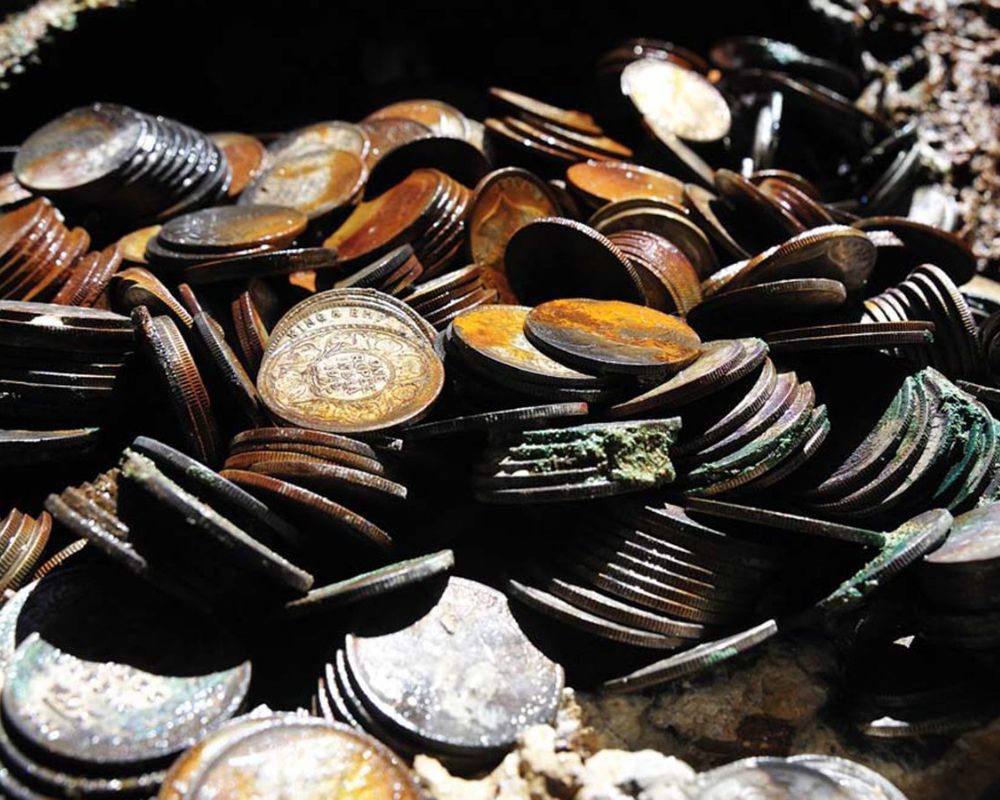
Within two years, the deepest salvage operation ever undertaken had recovered 100 tons of silver coins from the wreck, worth approximately $60 million in today’s money. Diving that deep might be scary, but what do they say about fortune favoring the bold?
SS Alpherat
Until 2011, when the SS City of Cairo was dived, the Dutch-owned merchant ship SS Alpherat was the deepest shipwreck to have its cargo salvaged. She went down in 1943 after being bombed by enemy aircraft, but all 23 passengers and crew survived.

In 1997, Blue Water Industries recovered a quantity of blister copper and tin ingots from the wreck of the Alpherat. She was 12,368 feet under the Atlantic Ocean, about 150 miles south of Cape Palmas, off the coast of Liberia in West Africa.
USS Kittiwake
This famous submarine rescue ship was launched in 1945 and served for almost 50 years until 1994. She was eventually scuttled to create an artificial reef in the British Cayman Islands. But the USS Kittiwake is perhaps most famous for another reason.

After NASA’s Challenger Space Shuttle disaster in 1986, the Kittiwake and her crew were the ones who found the Space Shuttle’s black box flight recorder at the bottom of the Atlantic Ocean. Did you know that black boxes are actually orange? It’s so they can be seen.
James McBride
Not to be confused with the American novelist of the same name, the James McBride was launched in 1848. She was famous at the time as she was the first vessel to carry cargo directly from West Indies in the Atlantic Ocean to Chicago on Lake Michigan.
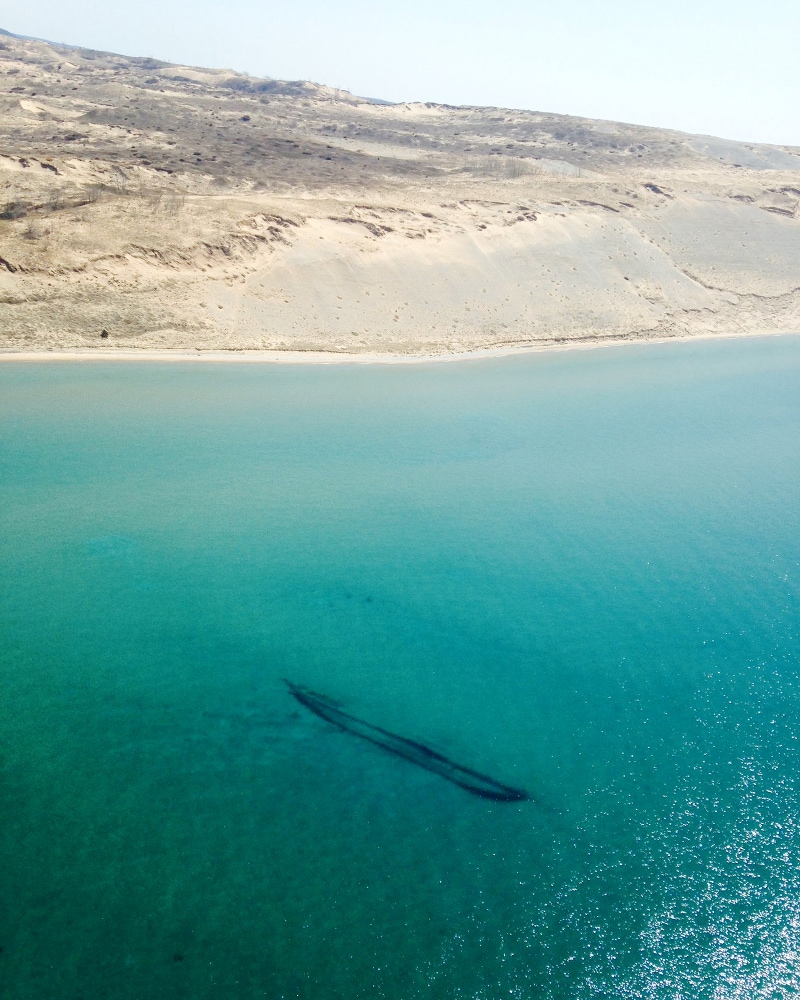
After nine successful years, she was carrying a cargo of wood to Lake Michigan’s Manitou Islands. However, on the return trip to Chicago, the ship ran into a fierce storm and ran aground in dangerous murky waters near Sleeping Bear Dune.
The Melckmeyt
Dutch merchant vessel the Melckmeyt is the oldest known shipwreck in Iceland. Known as the Milkmaid in English, she was smuggling goods in 1659 when she sank near Flatey Island. For 333 years, she lay undiscovered in one of the most dangerous places imaginable until two brave divers found the wreck in 1992.
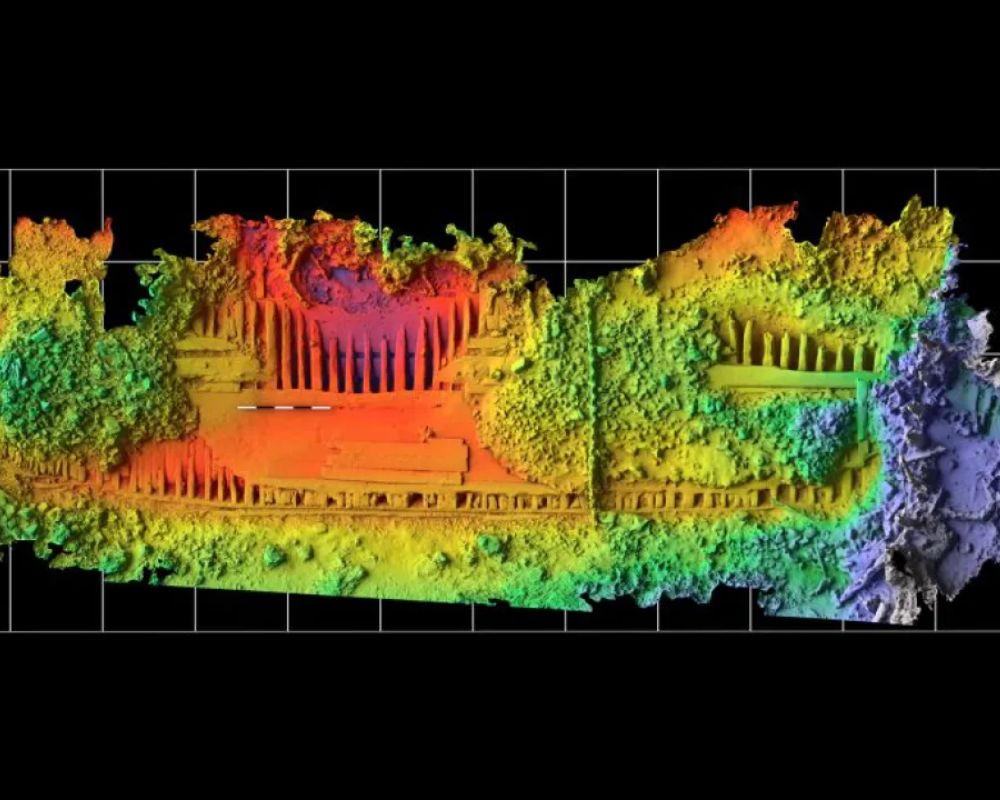
Today, you can dive the treacherous waters to see the Melckmeyt. If that doesn’t appeal, you can take a virtual reality diving experience that Icelandic marine archaeologists created to celebrate the Milkmaid’s 360th birthday in 2019.
The Vasa
In 1628, Swedish ship the Vasa was the most technologically advanced ship in the world. But because the gun deck was so heavy, she sank on her maiden voyage out of Stockholm harbor as hundreds of Swedes watched on in horror.
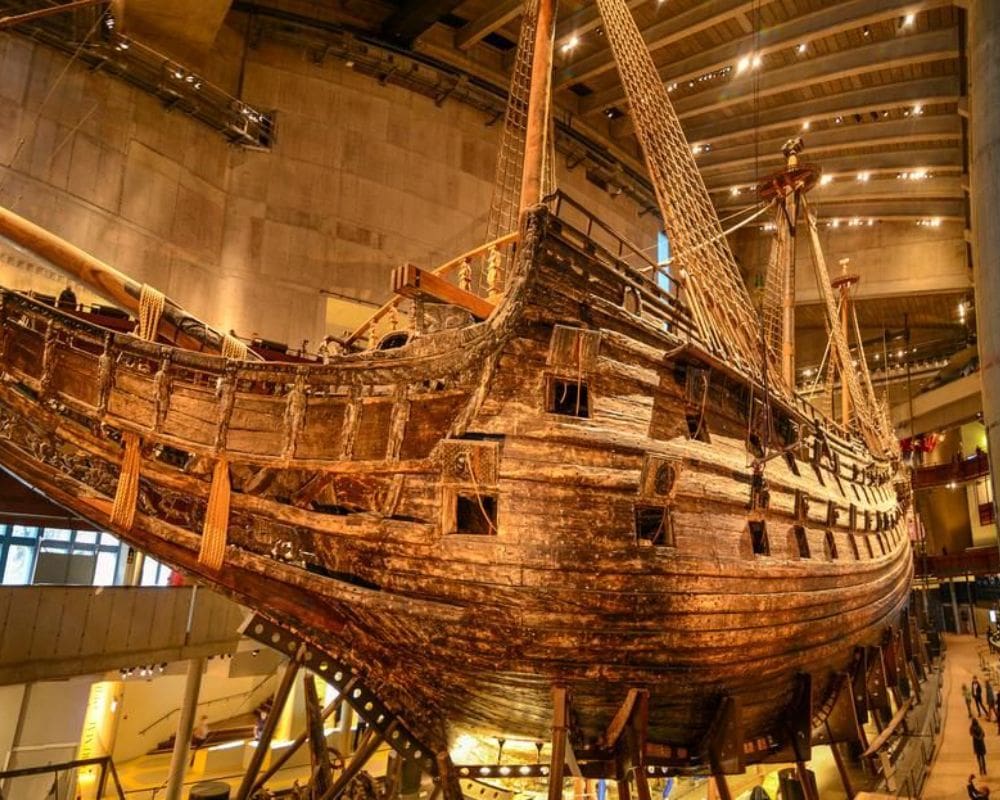
When the Vasa was rediscovered and raised in 1961, she was almost entirely intact because the Baltic water is so cold and low in oxygen there were no worms to eat the wooden hull. Back then, only the bravest divers could visit, but today, you can see her at the Vasa Museum in Stockholm.
German Submarine U-869
U-869 was lost on February 11th, 1945, taking the lives of all 56 crew members. And there, off the coast of New Jersey, she lay for 46 years. Until wreck diver Bill Nagle found the U-boat wreck in 1991. She lies at a depth of 240 feet, which is the limit for regular scuba divers.
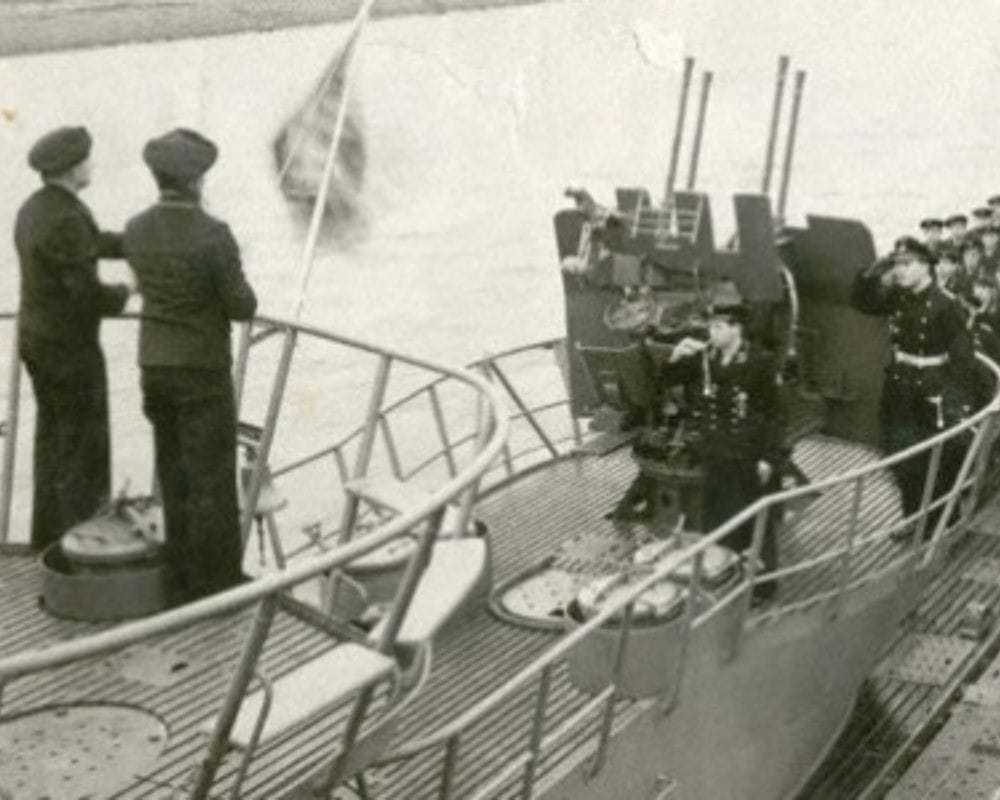
The mixture of cold water and dangerously strong currents can be deadly for the most experienced scuba divers. Sadly, three divers who discovered the U-869 passed away returning to the wreck.
SS Atlantus
The SS Atlantus was launched in 1918 as part of the United States’ World War I Emergency Fleet. There was just one tiny problem. It was made from concrete! She successfully carried U.S. troops home from Europe but was retired in 1920. Six years later, Colonel Jesse Rosenfeld bought the ship to turn it into a ferry dock.
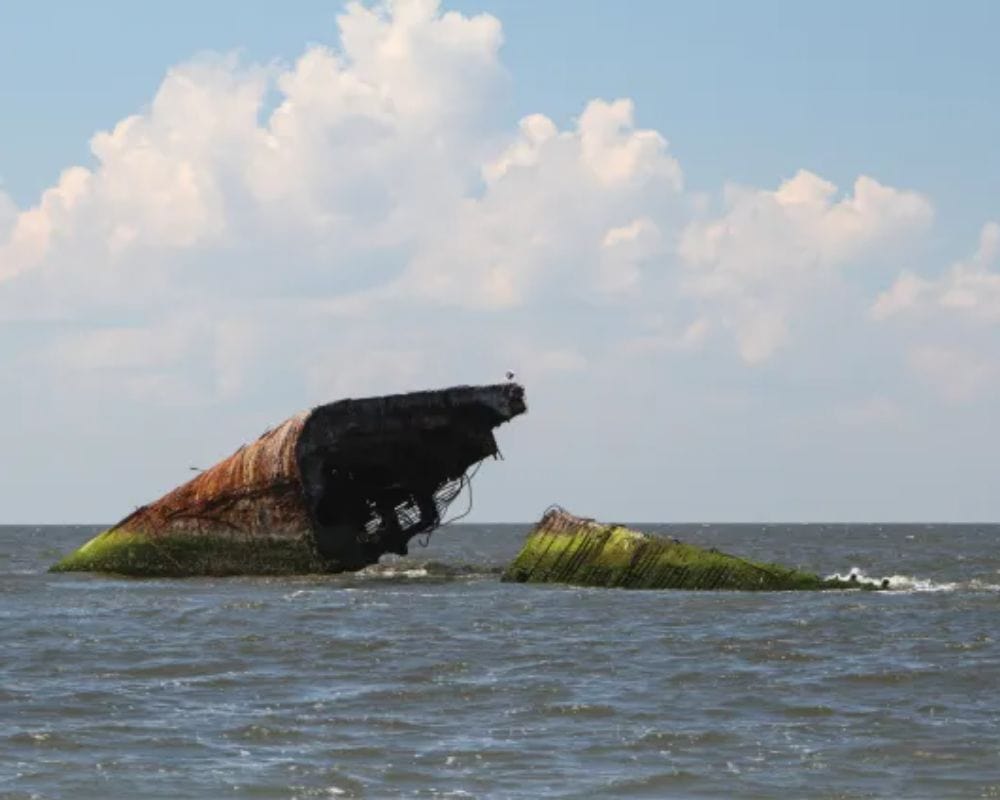
However, a storm caused the Atlantus to break free of her moorings, and she ended up sinking off the coast of Sunset Beach on the Jersey Shore.
The Dimitrios
Don’t worry if you can’t swim because not all shipwrecks are underwater. In 1980, the Dimitrios was moored in the Greek port town of Gytheio. A year later, she broke free from her moorings during a storm and floated through the Laconian Gulf for a month. She eventually grounded at Valtaki beach, near Gytheio, where she sits stranded to this day.

Mystery still surrounds the Dimitrios. Legend says she made illegal tobacco runs between Italy and Turkey and was intentionally set ablaze to hide the evidence.
The Panagiotis
Now for a not-very-dangerous shipwreck. Chased by the Greek Navy and encountering torrid stormy weather, suspected Italian mafia smuggling ship the Panagiotis ran aground in 1980. But the smugglers chose a great spot to crash! The ship sits in perhaps the most beautiful spot for a shipwreck anywhere in the world. She lies on the white sandy beach of an exposed cove on the coast of Zakynthos in the Ionian Islands of Greece.

Today, the idyllic cove is known in Greek as Navagio and attracts thousands of visitors each year.
SS Ayrfield
After 60 years of faithful service carrying coal and ferrying US troops around the Pacific in World War II, the SS Ayrfield was destined for the scrap heap. So she was sent to where ships go to die in Australia, Homebush Bay in Sydney.
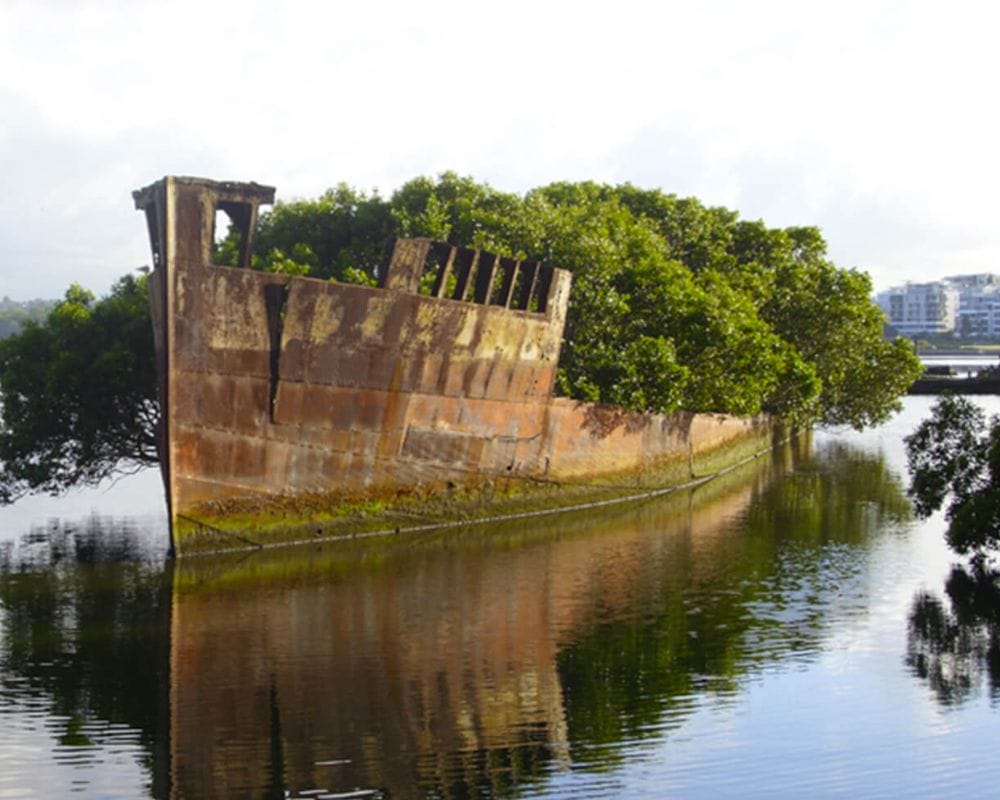
But while she was floating in the bay, the value of scrap metal plummeted overnight, meaning all the wrecking yards went out of business. So the Ayrfield just sat there a stone’s throw from Sydney. Today, she’s overgrown with trees. Watch out for those koalas and tree snakes!
The Hermes
Named after the Greek God of speed, the Hermes was a U.S. Coast Guard buoy tender until the end of World War II. Then she became a freighter ship until she was damaged crossing the Atlantic in 1983. With no money for repairs, the Bermudan Government sold her to the Bermuda Dive Association for one U.S. dollar!

Now the Hermes is the most famous shipwreck in Bermuda thanks to her complete structure. She’s now home to schools of damselfish.
HMS Hood
“The Mighty Hood” was the British Royal Navy’s star battlecruiser. She was commissioned in 1920 and remained the world’s largest warship for two decades. In May 1941, HMS Hood intercepted the German warship the Bismarck, which was headed to the Atlantic to attack Allied convoys. During the Battle of Denmark Strait, the British ship was struck by many German shells and broke in half.
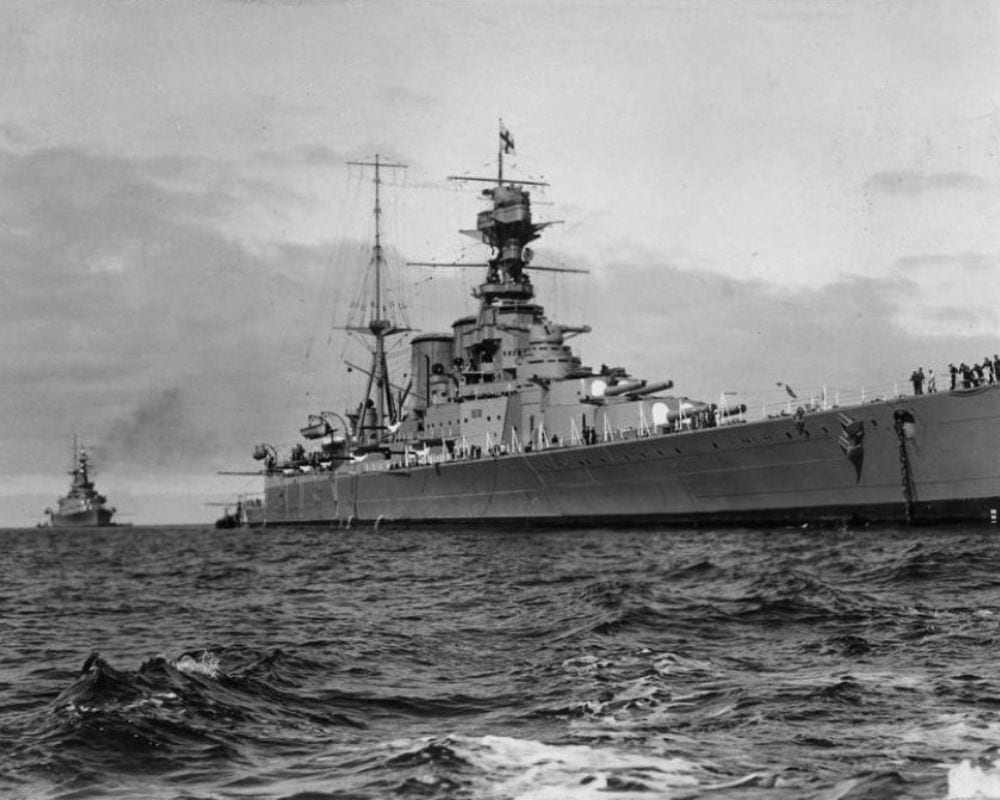
She sank between Greenland and Iceland, and all but 3 of her 1,418 crew members perished. Since the ship was considered invincible, her sinking badly affected British morale.
The Bismarck
Named after German Chancellor Otto von Bismarck, the battleship Bismarck was the pride of Germany’s Kriegsmarine. After sinking HMS Hood, the damaged Bismarck limped back to occupied France for repairs. However, the Royal Navy was determined to Sink the Bismarck, so they located and slammed 15 torpedoes into her.
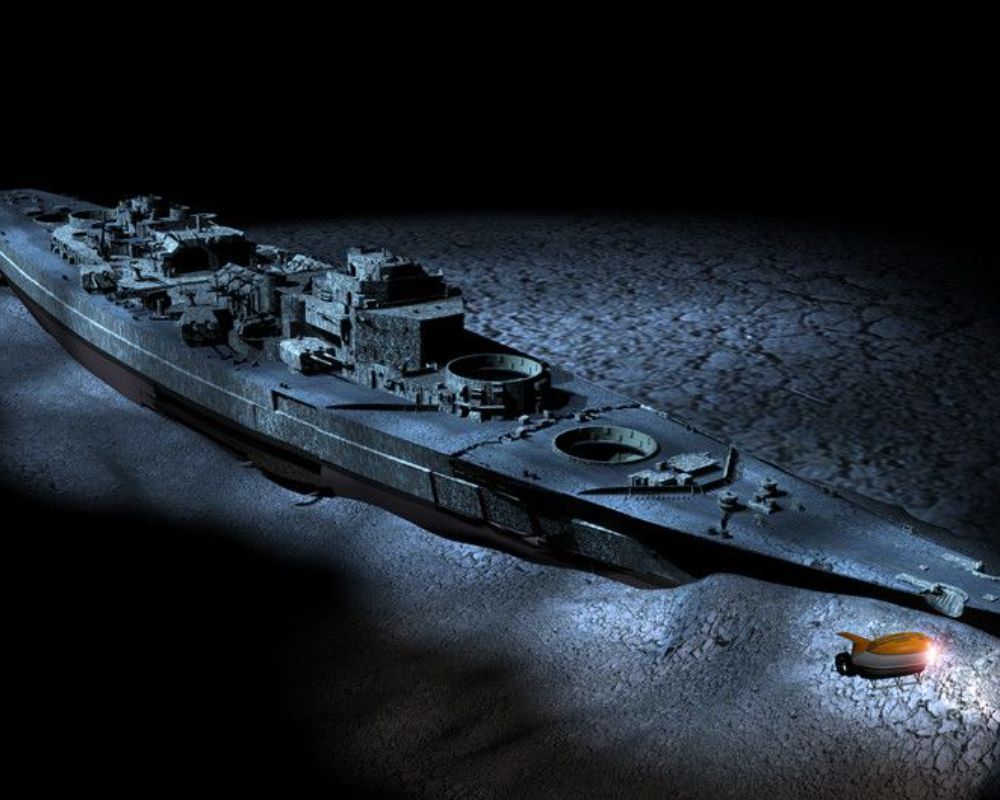
In 1989, Robert Ballard, the oceanographer responsible for finding the Titanic, located the wreck of the Bismarck 400 miles west of Brest, France. She sits on top of an extinct underwater volcano.
Kublai Khan’s Lost Fleet
Kublai Khan’s lost fleet makes for one of the most famous ancient shipwrecks, but most ships remain lost. Genghis Khan’s grandson launched Mongolian fleets to attack Japan in 1274 and 1281. Both times, the gods intervened, and his impressive fleet was sunk by storms, taking the lives of tens of thousands of troops.
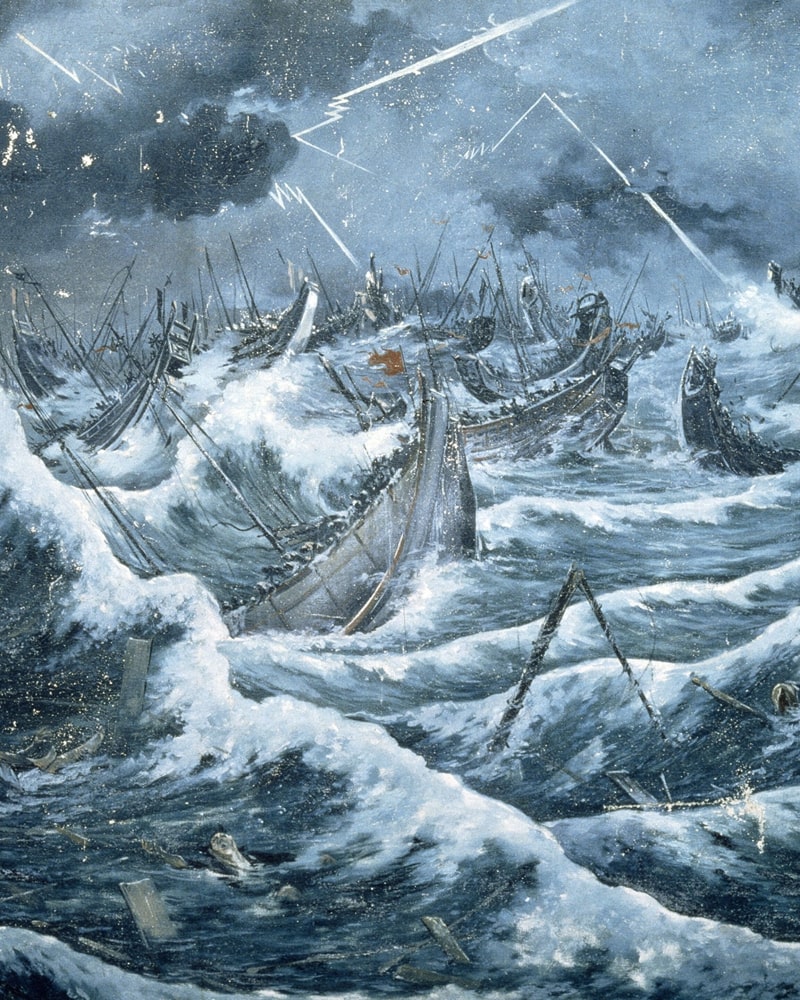
In 2001, marine archaeologists claimed to have found an entire shipwreck from the fleet. More recently, in 2015, underwater archaeologists found a Mongolian ship in a bay near the city of Matsuura, off the island of Kyushu, Japan.
The Spanish Armada
In 1588, a fleet of 130 Spanish ships tried to invade England. Sir Francis Drake famously finished playing his game of bowls before engaging. A mix of English firepower and ferocious storms defeated the Spanish Armada, taking the lives of around 5,000 men.

In 1985, local divers discovered the wrecks of three Spanish vessels, La Lavia, La Santa Maria de Vision, and the 32-gun warship La Juliana. In 2015, several cannon from La Juliana were found in the sands off Streedagh in County Sligo, Ireland.
SS Mont-Blanc
Laden with high explosives, the French cargo ship SS Mont-Blanc collided with the Norwegian vessel SS Imo in the waters of Halifax, Nova Scotia, Canada in 1917. The Mont-Blanc caught fire and exploded, launching her hull 1,000 feet into the air and devastating Halifax.
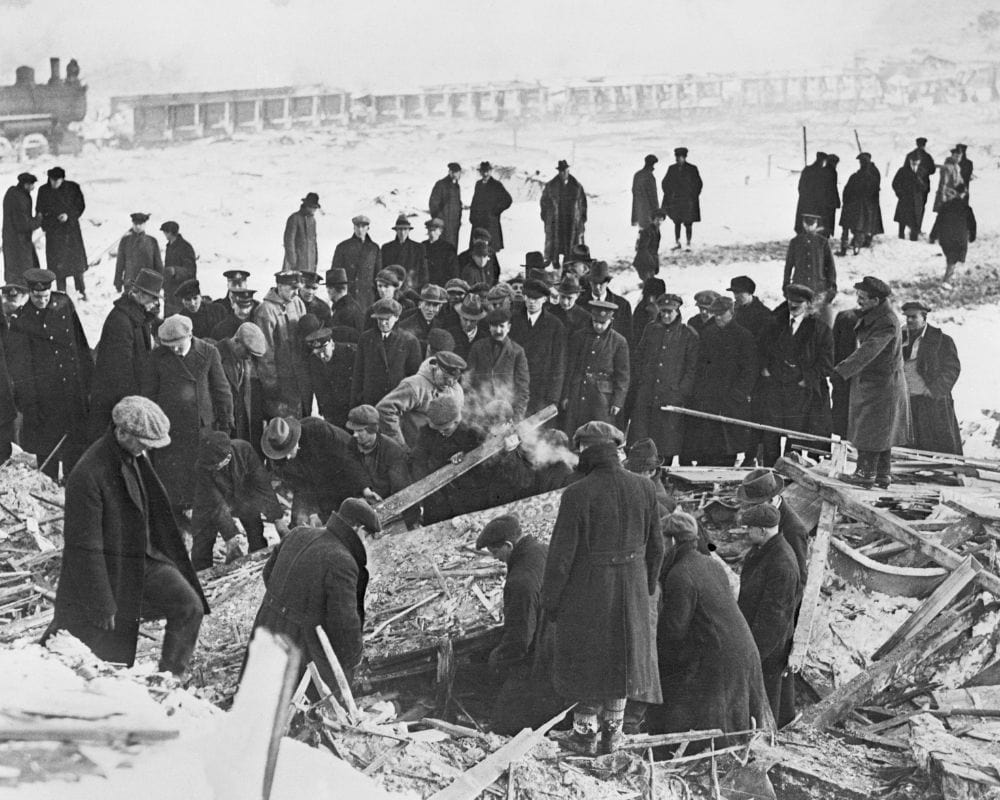
One thousand seven hundred eighty-two people perished, and 9,000 were injured. At the time, the blast was the largest human-made explosion ever––the equivalent to 2.9 kilotons of TNT and only seven times smaller than Hiroshima. You can try to dive for the Mont-Blanc, but most of her was scattered around Halifax.
Flor de la Mar
And finally, a shipwreck that’s never been found. The Portuguese Flor de la Mar carried treasures from Indonesia to Portugal. In November 1511, Afonso de Albuquerque was returning from The Conquest of Malacca, bringing the king a vast treasure trove when the ship and 400 men were lost off Sumatra.
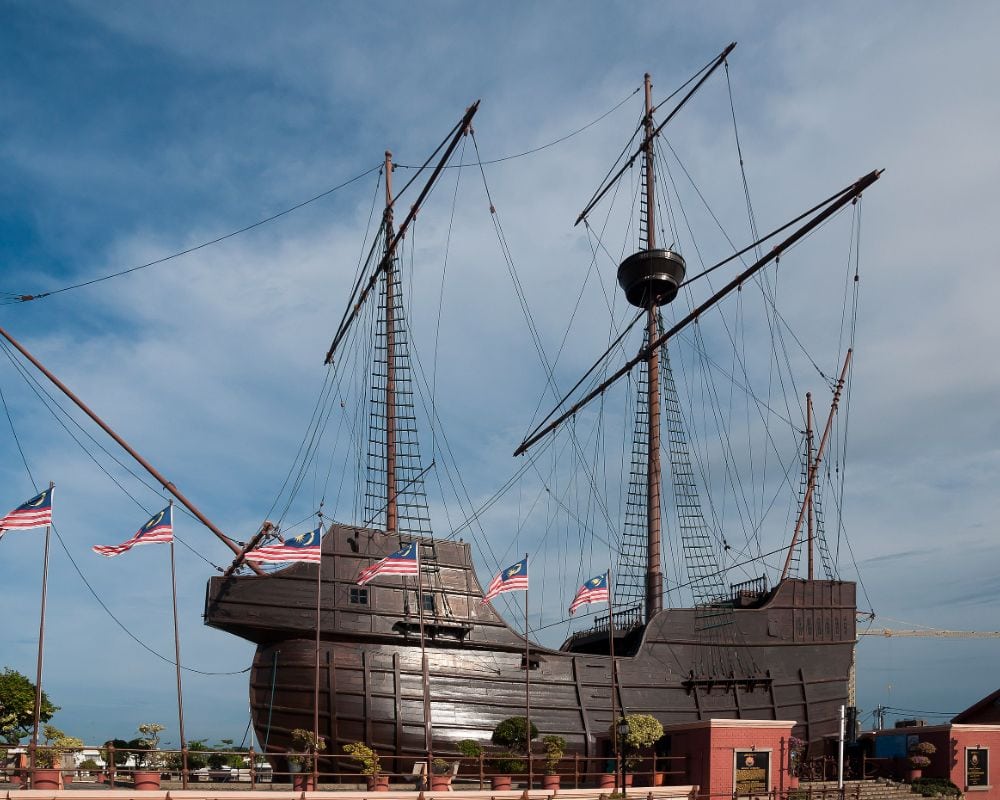
Legend says the haul included four full-sized pure gold seated lions. The trove is estimated to be worth three billion dollars. So, who’s up for a trip to Sumatra? Failing that, you can see this wonderful replica in Melaka, Malaysia.
USS Samuel B Roberts
The world’s deepest shipwreck lies deep in the Phillippine Sea. In the largest-ever battleship during the Battle off Samar in 1944, the USS Samuel B Roberts was sunk by the Japanese Navy ship The Yamato. Now, she lies at a depth of 22,620 feet, which is over four miles down!
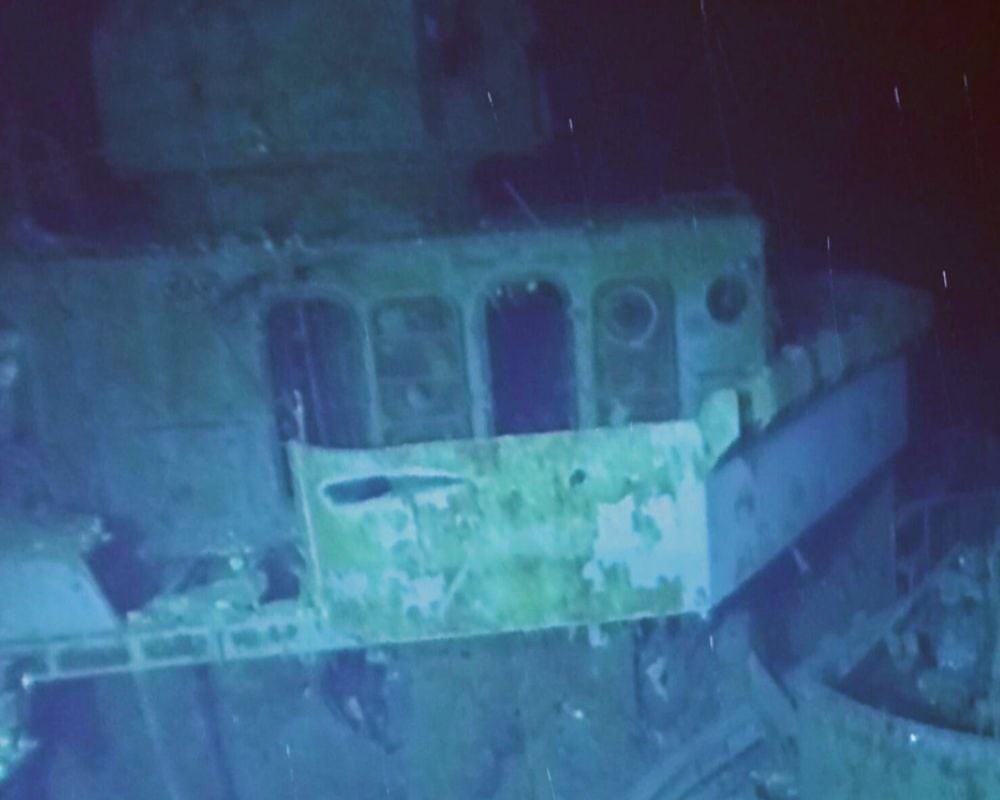
In June 2022, explorer and retired US Navy officer Victor Vescovo — who owns a deep-diving submersible — and French sonar specialist Jeremie Morizet discovered the World War II ship. But that’s not Victor Vescovo’s only claim to fame.
Grab your flippers and join us as we dive into deep, murky, shark-infested waters to check out the world’s most dangerous shipwrecks. We’ll go treasure hunting amongst Kublai Khan’s ancient sunken fleet, the Spanish Armada, and discover $60 million of real pirate treasure. We’ll uncover silver pieces of eight, dodge torpedoes, and plunge the depths to learn about the most famous ships of them all, The Titanic and the USS Indianapolis, made famous in Jaws.